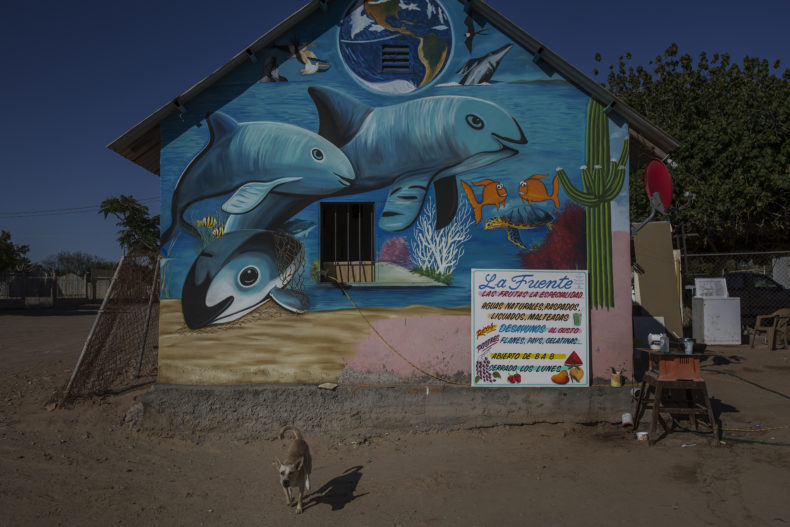 Saturday was the day I finally gave up. The last hope for the vaquita marina, the world’s smallest and most endangered cetacean, is gone. On Saturday, biologists working in the Upper Gulf of California announced that the latest animal they had captured in an effort to save the species had died in captivity.
Saturday was the day I finally gave up. The last hope for the vaquita marina, the world’s smallest and most endangered cetacean, is gone. On Saturday, biologists working in the Upper Gulf of California announced that the latest animal they had captured in an effort to save the species had died in captivity.
For the first half of 2017, I was knee deep in a story I’ve been following since I got to Mexico six years ago. In summary, an animal that had found itself on the wrong side of rampant poaching practices is all but wiped out and the last option is a Hail Mary plan to round them up into captive pens and hold them until such time as humans stop sucking at ocean stewardship. (For a full review of the vaquita’s tragic tale, I really encourage you to read the story.)
But there was always a problem with this strategy – no one had ever tried to catch one before. It was possible they wouldn’t go quietly into pens.
“If captivity fails, then, well, we tried,” NOAA biologist Barbara Taylor told me in the spring. “It’s game over.”
After Saturday, I think it’s game over. The vaquita doesn’t do captivity. The first animal caught by biologists got so stressed out that it had to be released. The second died within hours. We have now officially done more harm than good in our attempts to save the vaquita. In fact, this whole effort has been one long lesson in throwing the porpoise out with the bathwater. From the beginning, it feels like we’ve tried to help the vaquita with the best of intentions and have only made things worse.
From the start, I was probably the wrong person to write the story. My background is in biology and as a scientist I even worked in cetacean research. So when I talked to biologists while reporting this story, I found I agreed with all of the solutions they have been chasing since the early 90s. Stronger laws protecting the animal? More enforcement? Yeah! We have to crack down hard on this community that is killing harmless porpoises. Force the community help us preserve them.
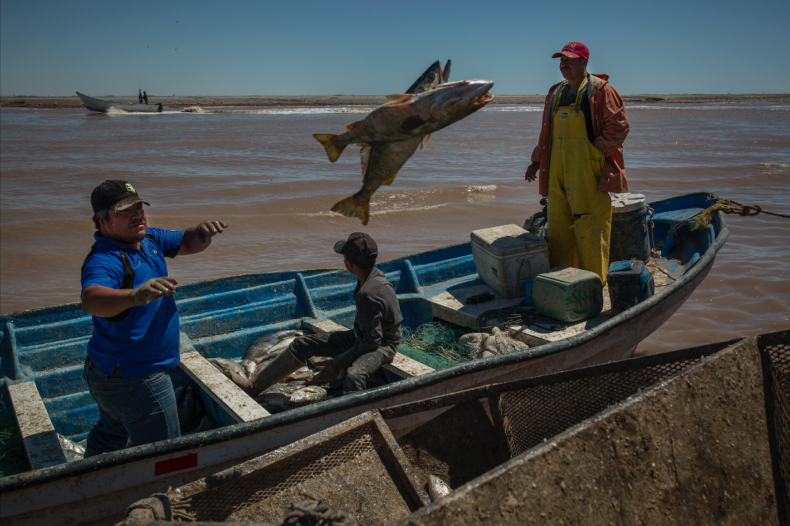 My wife, on the other hand, is a social scientist who works on development here in Mexico. When we first started dating, I used to tease her for being a soft little scientist in her soft little science. I now understand that helping a community pull itself out of poverty is more complex than brain surgery or quantum physics.
My wife, on the other hand, is a social scientist who works on development here in Mexico. When we first started dating, I used to tease her for being a soft little scientist in her soft little science. I now understand that helping a community pull itself out of poverty is more complex than brain surgery or quantum physics.
There is no magic equation for community organizing but she begins by understanding that “the community” isn’t some monolithic creature that thinks as a unit. There are complex politics and power dynamics at work that can either aid or destroy all her efforts.
I now understand why the vaquita is going extinct. They sent too many people like me into the region and not enough like her.
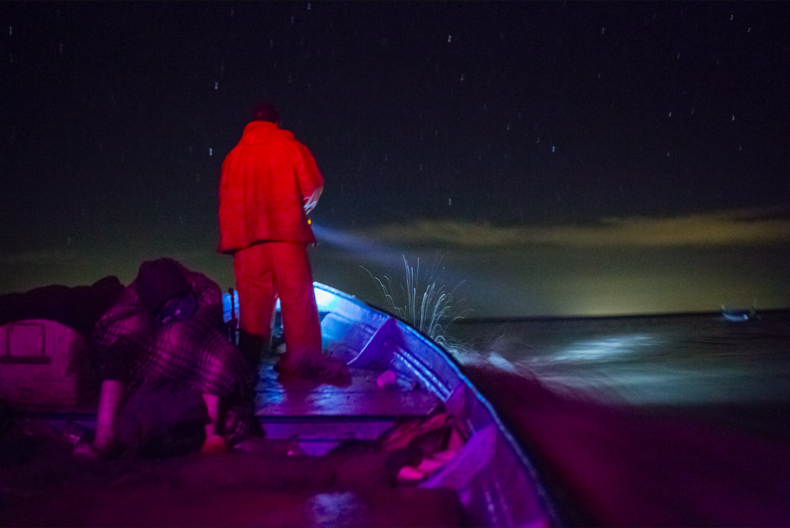 This is not a condemnation of any particular group. Everyone that I spoke to while reporting the story was genuinely passionate about their work and trying to help prevent an incredible little creature from disappearing from the Earth. But it just seemed like none of them ever had any idea how to do it.
This is not a condemnation of any particular group. Everyone that I spoke to while reporting the story was genuinely passionate about their work and trying to help prevent an incredible little creature from disappearing from the Earth. But it just seemed like none of them ever had any idea how to do it.
To save the vaquita, we needed to create opportunities and incentives for local people not to poach totaba (the most valuable fish in the area, which just happens to be the same size as the vaquita).
It was a job for my wife’s kind of people. My kind of people are good at counting fish and understanding ecosystems. Her people understand people. They might start with a complex “power analysis” of the community. Who pulls the strings? Who moves opinion? What do they want? And how can they screw us? To my knowledge, this kind of analysis has never been done in vaquita country.
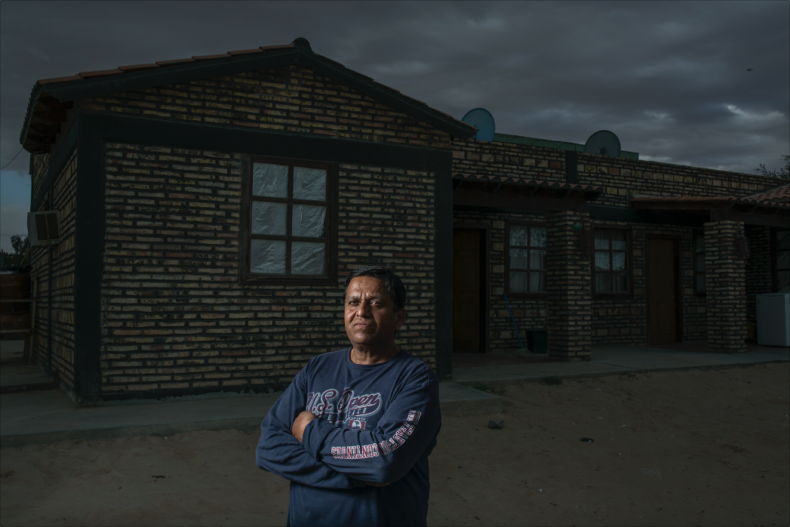
Then they might do another analysis to understand what the opportunities are for economic development in the area – and where a small push might speed it up. In the Upper Gulf there was a government effort in 2007 to create ecotourism jobs without any idea if there was demand for it. Turns out there’s not a whole lot of people clamoring to vacation in fishing villages on the banks of chocolate-colored water. But what about the dozens of other industries that might have helped people avoid poaching? Again, no one did that work.
And there are tons of other tricks development experts use today, none of which are familiar to people like me. This is not Monday morning quarterbacking, it’s more like a warning. The global north doesn’t do extinction anymore, we just force other countries to do it in order to get fresh shrimp cocktails in Las Vegas or medicinal swim bladders in Beijing. Extinction in the 21st Century looks to be ever more centered on the developing world, which will require fewer fish nerds and more people nerds.
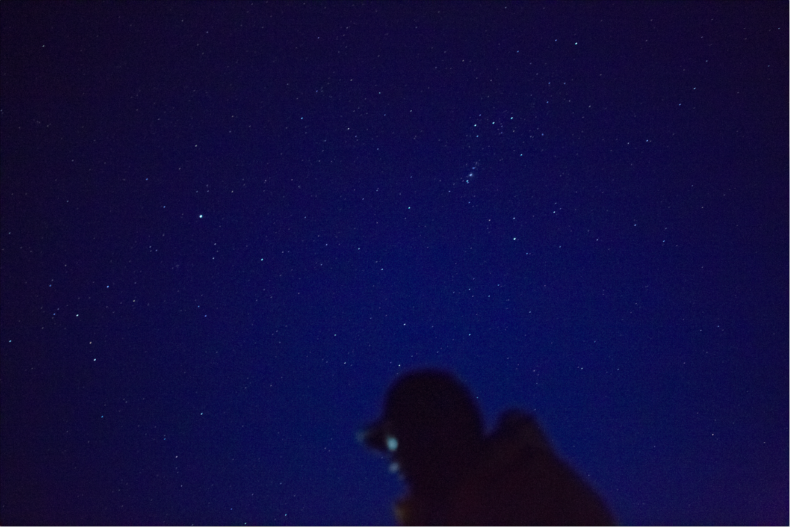 If we don’t learn from the vaquita, we will do this again. There is a saying in conservation: Fool us once, shame on us. Fool us twice, no really, shame on us. Fool us three times and SERIOUSLY ARE WE STILL MAKING THE SAME DAMN MISTAKES?
If we don’t learn from the vaquita, we will do this again. There is a saying in conservation: Fool us once, shame on us. Fool us twice, no really, shame on us. Fool us three times and SERIOUSLY ARE WE STILL MAKING THE SAME DAMN MISTAKES?
It’s time for us to realize that conservation isn’t about biology anymore. If you are standing on the shore of some poor little town, looking out over the water trying to figure out how to save some inspiring ocean species, just stop and turn around 180 degrees. That’s where your work is.
That’s my message for the future but it doesn’t help me now, this week. This week I’m in mourning. In my story, I predicted that the vaquita was way past saving but down deep I really wanted to be wrong. I prayed the biologists in the Upper Gulf would pull off the impossible. The press has descended on the Upper Gulf to watch the Hail Mary pass in action. But not me. I just couldn’t watch this animal who now feels like a friend lose its last hope.
And that burns. The vaquita never did anything to us humans. It never asked to get caught in our nets or to have the Colorado River sucked dry or to have some of the world’s deadliest drug cartels move in to take over poaching in the area. It didn’t even want to be found in the first place.
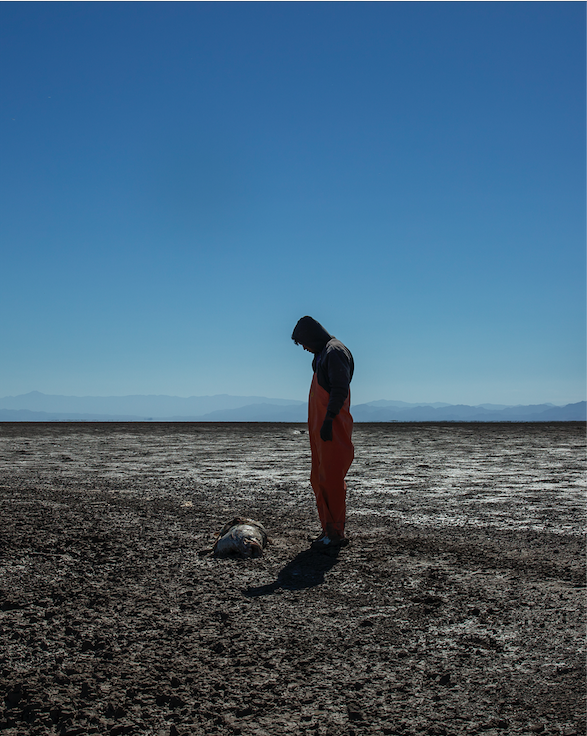 All it ever wanted was to be left the hell alone to forage on the bottom of its murky sea. It hid from biologists for decades, so well that some locals still don’t believe it exists. And maybe that was its downfall. It couldn’t avoid our nets like its more social dolphin cousins. And when we finally tried to bring them into forced sanctuary, when they finally had to look us in the face, it killed them.
All it ever wanted was to be left the hell alone to forage on the bottom of its murky sea. It hid from biologists for decades, so well that some locals still don’t believe it exists. And maybe that was its downfall. It couldn’t avoid our nets like its more social dolphin cousins. And when we finally tried to bring them into forced sanctuary, when they finally had to look us in the face, it killed them.
But what burns me most is that we did this. All of us. China, with your ridiculous need for worthless animal parts for ineffective medicine, you did this. United States, with your thirst for fresh water and your crappy attitude toward your southern neighbor, you did this. And Mexico, with your paralyzing corruption and your complete inability to enforce your laws, you did this.
Now all of you go home, back to your lives. To binge-watching Stranger Things or Trump’s latest outrage. I just want to sit here for a while and cry for the good friend that I never got to meet. And never will.
Photos by the talented Christian Rodriguez, Instagram: @christian_foto. To read another essay about the vaquita and to see stunning photography by Dominic Bracco, check out our project with the Pulitzer Center on Crisis Reporting.
This was a gut punch of an article. Thank you for taking the time to share it, despite the lousy circumstances.
Well done humanity. You poison, toxic species that messes everything up. We are the most arrogant, selfish species on Earth. We trash this planet, treat it as something in between as cash cow and a dumping ground then have the nerve to think that we deserve to live on another planet.
Actually, I do think that humans should go to another planet. Every single human should move to Mars, without a space suit and live there.
Wonderful piece!
I constantly run into this (being an academic scientist employed a university); arrogance and condescension towards social scientists and their ilk. In fact one colleague recent went so far as to say our group of applied, professional conservationists weren’t even “real” scientists and that by exploring the economics, political dimensions, etc. of our systems we are trying to rehabilitate, we are somehow weaker or “playing” at our work.
I often long for the days wherein I can actually return to pure natural history and ecological studies which explore human-free systems. My work today is rooted in community engagement, interdisciplinary approaches, and efforts to better understand the motivations of the human actors in our system in question. People management is really what conservation is all about. And managing our own species seems to only be getting harder and harder.
Thank you for sharing. The story is heartbreaking and condemning.
Thank you for writing this. It is incredibly heart-wrenching to realize that we truly are causing irreversible damage to our planet. But when you say “It’s time for us to realize that conservation isn’t about biology anymore,” my response is “no shit.” Conservation has never been about biology or ecology, as much as we have tried to play it off that way for reasons I don’t quite understand (to ensure it doesn’t become a ‘soft little science’??) I started my career in graduate school in ecology, thinking that to gain the credibility to do conservation work, you had to have the ‘hard science’ street cred. I quickly realized that ecologists know nothing about conserving species or ecosystems, because they don’t understand people. And I made the hardest decision of my life and left. I appreciate that conservation ecologists and biologists are realizing this now, but I don’t understand why it has taken this long – and I’m sure there are many social scientists who feel the same way. I’ve always thought that conservation scientists are truly some of the best-positioned people – there is credibility with science, govt, and communities – to bring about real change. I’m just frustrated that our system doesn’t well train or support those who want to do it differently, and likely more successfully.
So well written and, hopefully, inspirational to those in the future seeking solutions to impending extinction of other species. I wish that I could have been of help.
What a frustrating and heartbreaking situation. How many more times will this happen? When will the tipping point come that will awaken everyone from their distracted slumber?
I would add, I would say that they are the friends I never knew. In the Upper Gulf and the Colorado River Delta, other species of fauna have gone before the Vaquita, which went unnoticed because they simply “did not leave”. That mural will immortalize the vaquita marina. It would only take away the sahuaro and the orange fish.
Truly sorry to hear this, Erik. As a conservation biologist, my hair’s been on fire for a quarter of a century plus. Humans are terrible at saving our fellow inhabitants, who often show more ‘humanity’ than we do. We’re also rotten at ‘managing’ natural environments, yet arrogant enough to continue along that sham of a path. You honestly are not alone in your grief or your efforts.
Is there any sort of plan to get the fishermen fishing again so they can make a living? Is there anyway to help the fishermen get a different type of nets that are safe to use and is there anyway the local fishermen can help protect their area from illegal fishermen? I know this situation has devastated so many but is there anything we can do now to help turn this around? I have been following this story for the last year and a half and there are no winners at this point. This little town and fishermen need hope. I’m so glad for people like you and your wife.
Great job in describing the current situation in San Felipe.
Solutions? Never give up. We need ideas on new employment for San Felipe and how to make the Sea of Cortez surrounding San Felipe a sanctuary for the Vaquita!
Any ideas?
Fisherman in San Felipe were paid not to fish by the Mexican govt. A lot of money was spent on this. It’s not clear all the fishermen were paid who were suppoed to be paid. Illegal fishing was said to continue in some cases even though fishermen were paid not to fish.
Much of my reporting was actually in El Golfo de Santa Clara to the east. And yes, the government gave refillable charge cards worth about $400 per month to the fishermen while the permit holders got some $10,000 per boat. Hence, the thing about internal politics. A lot of the “fishermen” quoted in the media were actually being paid quite well and at least one of the was also an active poacher.
While I agree with a lot this author says, I do think he ignores the more serious problem of the poaching rings that promote the use of gill nets. Getting alternatives together for local fishermen would not do much good if the smugglers continue to pay top dollar for poaching. As long as that system prevails, no alternatives are likely to work for the fishermen. And some of us biologists (I got my degree in Zoology at UC Berkeley in 1973) do practice efforts to promote alternatives for people impacted by conservation efforts. In the 1980’s, I worked closely to ban gill nets off the coast of California with the cooperation of the Vietnamese immigrant fishermen, providing and promoting funding for alternative sustainable fisheries. In the late 1990’s I helped get a loan program going for the fishermen and local whale watching guides in San Ignacio Lagoon on the other side of Baja from San Felipe, helping the fishermen buy efficient (uses less gas and oil) 4-stroke outboard motors to replace their inefficient (and polluting) 2-stroke engines. The local fishermen refused the blandishments of the Mexican government trying to develop the area with a massive salt plant industrial complex, promising (of course) local jobs. We and the environment and the fishermen won. We are offering the local Taiji dolphin hunters funding to end the dolphin hunts in Japan (so far ignored). We routinely promote Dolphin Safe tuna companies. You gotta do what you gotta do. — Mark J. Palmer, Associate Director, International Marine Mammal Project, Earth Island Institute
Dear Erik Vance. i like your piece that Kyle Crawford posted on San Felpe Chatter. He has since taken it down as maybe he does not agree with my post. But I liked your article very much. But the vaquita is not dead and yes the sanctuary messed up. where were the usa trained dolphins as they were to just guide them into the sanctuary and protect until the longer term products could be worked out. Why was the animal taken out of the water by experienced VETS. every time an animal is to be rescued by the sanctuary, it is new. but it does not mean the sanctuary is new. Maybe everybody is getting mixed in this social media hipe. in reality, They have just gone back to the other 563 sanctuaries in the world to get some experiences, that they should have asked before. . Mexico has done far more than any other countries we have worked for in the past rescues. I have participated in 8 but non in Mexico. I would have liked to have had the help and money, the Mexican government gave the vaquita. but it is easier to blame now-days which your article tried to avoid. thank you but fortunately many sanctuary recuses came after mistakes and not at the first try. See, while i like your article, I still have hope and I know you would not be mad if this time you were not right! But even with 28 left, the are not dead yet.
Such a sad story and all too true. Wildlife Conservation is all about people.
Please don’t give up.
I work in cultural heritage conservation with a movement to focus on people not ‘sites’ as a way to empower effective natural and landscape conservation efforts. There is a real need for modern planning and management to incorporate traditional ecological knowledge, and to understand that environmental management without the incorporation of people and culture can never work. It is habitat not species. It is people not places.
British anthropologist-philosopher-naturalist-poet Gregory Bateson suggested that “the major problems of the world are the result of the difference between way nature works and the way people think.” Today, when we know so much more about “the way nature works” at scales that range from epigenetic triggers to DNA expression to global ecosystem-level responses to increasing warming and acidity, we still are truly not effective at preserving species at risk, at restoring species to ecologically-significant population levels, or rehabilitating the ecosystems in which such species live.”
And so I, ever-so-humbly, and as a conservation biologist/ecologist by profession and passion, suggest the following addendum: “The major problems in effectively accomplishing wildlife conservation goals are the result of [we] conservation biologists only thinking about the way nature works, and not about the way people think… and live.”